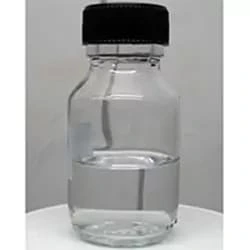IUPAC Name
Formic Acid
Cas Number
64-18-6
HS Code
2915.11.00
Formula
HCOOH
Appearance
Clear, Colorless Liquid
Common Names
Methanoic Acid, Formylic Acid, Hydrogen Carboxylic Acid, Aminic Acid
Packaging
35 Kg HDPE Square Drum
Formic acid is the simplest carboxylic acid. It has a pungent and penetrating odor at room temperature. It is also miscible with water and most polar organic solvents but immiscible in non-polar solvents.
Formic acid can be found in the venom of bees and ants. It can undergo a series of organic reactions to form other relevant organic compounds, such as with alcohol to form esters, reduction to form aldehydes, decomposition to form carbon dioxide and water, and reaction with sulfuric acid to yield carbon monoxide. Tradeasia International is ready to be your formic acid supplier. We have spent over two decades as a chemical distributor company. Always thrive to deliver a seamless supply chain experience and the best service to our customers.
Formic acid can be manufactured with the reaction of methanol and carbon monoxide, in the presence of a strong base such as sodium methoxide. The methyl formate formed is then hydrolyzed to yield formic acid and regenerate methanol. With the regeneration of methanol, only a catalytic amount of methanol is required for the whole manufacturing process.
CH3OH + CO → HCO2CH3
HCO2CH3 + H2O → HCO2H + CH3OH
Formic acid is also a by-product of the manufacturing of acetic acid. When acetic acid is manufactured via the acetaldehyde oxidation method, butane is oxidized, and ethylene is hydrated via the Wacker process to obtain acetaldehyde. Further oxidation of acetaldehyde yields acetic acid, with a significant amount of formic acid as a by-product.
Formic acid can also be formed from the hydrogenation of carbon dioxide or by heating oxalic acid in glycerol catalyst and extraction by steam distillation. Alternatively, oxidation of biomass such as sugars, wood, and waste paper can yield formic acid and carbon dioxide.
Formic acid is the simplest carboxylic acid. It has a pungent and penetrating odor at room temperature. It is also miscible with water and most polar organic solvents but immiscible in non-polar solvents.
Formic acid can be found in the venom of bees and ants. It can undergo a series of organic reactions to form other relevant organic compounds, such as with alcohol to form esters, reduction to form aldehydes, decomposition to form carbon dioxide and water, and reaction with sulfuric acid to yield carbon monoxide. Tradeasia International is ready to be your formic acid supplier. We have spent over two decades as a chemical distributor company. Always thrive to deliver a seamless supply chain experience and the best service to our customers.
Formic acid can be manufactured with the reaction of methanol and carbon monoxide, in the presence of a strong base such as sodium methoxide. The methyl formate formed is then hydrolyzed to yield formic acid and regenerate methanol. With the regeneration of methanol, only a catalytic amount of methanol is required for the whole manufacturing process.
CH3OH + CO → HCO2CH3
HCO2CH3 + H2O → HCO2H + CH3OH
Formic acid is also a by-product of the manufacturing of acetic acid. When acetic acid is manufactured via the acetaldehyde oxidation method, butane is oxidized, and ethylene is hydrated via the Wacker process to obtain acetaldehyde. Further oxidation of acetaldehyde yields acetic acid, with a significant amount of formic acid as a by-product.
Formic acid can also be formed from the hydrogenation of carbon dioxide or by heating oxalic acid in glycerol catalyst and extraction by steam distillation. Alternatively, oxidation of biomass such as sugars, wood, and waste paper can yield formic acid and carbon dioxide.
